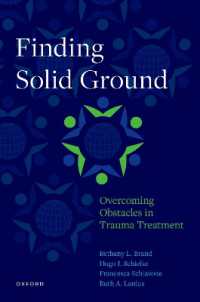- ホーム
- > 洋書
- > 英文書
- > Nature / Ecology
Full Description
Nowadays, ecologists worldwide recognize the use of spatial analysis as essential. However, because of the fast-growing range of methods available, even an expert might occasionally find it challenging to choose the most appropriate one. Providing the ecological and statistical foundations needed to make the right decision, this second edition builds and expands upon the previous one by: • Encompassing the basic methods for spatial analysis, for both complete census and sample data • Investigating updated treatments of spatial autocorrelation and spatio-temporal analysis • Introducing detailed explanations of currently developing approaches, including spatial and spatio-temporal graph theory, scan statistics, fibre process analysis, and Hierarchical Bayesian analysis • Offering practical advice for specific circumstances, such as how to analyze forest Permanent Sample Plot data and how to proceed with transect data when portions of the data series are missing. Written for graduates, researchers and professionals, this book will be a valuable source of reference for years to come.
Contents
Preface; 1. Spatial concepts and notions; 2. Ecological and spatial processes; 3. Points, lines and graphs; 4. Spatial analysis of complete point location data; 5. Contiguous units analysis; 6. Spatial analysis of sample data; 7. Spatial relationship and multiscale analysis; 8. Spatial autocorrelation and inferential tests; 9. Spatial partitioning: spatial clusters and boundary detection; 10. Spatial diversity analysis; 11. Spatio-temporal analysis; 12. Closing comments and future directions; References; Index.







